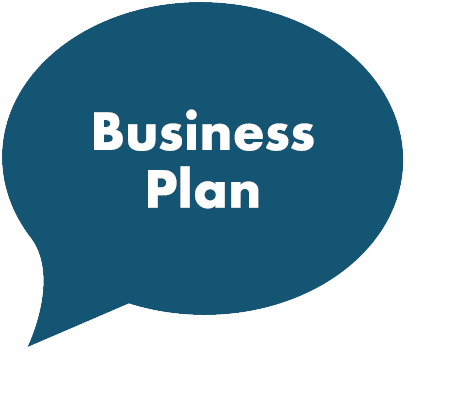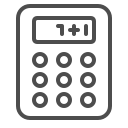Fritz Sybergs Vej 9
DK 8270 Hojbjerg
Scandinavia
info@dynamicbusinessplan.com


What is a business model?
A business model is a description of “how you generate revenue in your company” E.g. I sell bagels from my food truck direct to customers.
Innovate your business model
You should always question if your chosen business model is the best for your
business. If one day five other food trucks line up beside you it is time to
innovate your business model.
Are your customers all in for organic bread
and fillings or could you make the nearby businesses hand out pre-payed vouchers
for your truck? These thoughts are developing your business model.
Why so much focus on business model
Today customers have more choices, variegated customer needs than 20 years ago and, online supply alternatives are more transparent. Businesses therefore need to be more customer-centric. These developments in turn require businesses to re-evaluate the business models they present to customers
This new environment has also amplified the need to consider not only how to
address customer needs more quickly, but also how to capture value from
providing new products and services.
The FAB -model can
help you find value in your product or service. The
business canvas
is also a great tool.
Creating a business model
A business model articulates the logic and provides data and other evidence that demonstrates how a business creates and delivers value to customers. It also outlines the architecture of revenues, costs, and profits associated with the business enterprise delivering that value.
Or as the Danish entrepreneurship professor Soren Haugaard says: The art of business is to combine product and market to a profitable form
Business model ends up as a business plan
In essence, a business model embodies nothing less than the organizational and financial architecture of a business. It is not a spreadsheet or computer model, although a business model might well become embedded in a business plan and in income statements and cash flow projections. The business model is the fundamental platform for your business. On top of this you build your business plan.
Types of business models
There are many types of business models even within the same trade. Here you find business models that are common for five different trades. Which one is best for you?
1) Business models for production business
Product production You develop, produce and deliver a product and invoice the customers the production price with the addition of costs incurred and a margin for the profit.
Order production You produce goods on order and invoice the
customer an individually calculated price for each delivery.
Outsourcing You
design a product but outsource the entire production to another factory and
invoice the customers the production price plus the cost incurred and a margin.
License Production You produce and deliver a product that others have designed and invoice customers a price that can also cover the amount you pay to the licensor.
Royalty You design a product but allow others to handle production, delivery and sales, and invoice the manufacturer a royalty on the number of pieces produced or sold.
2) Business models for Commercial Business
Wholesale sales You buy goods from different manufacturers and resell them in smaller quantities to retailers, as you invoice a price that covers costs for i. a. storage and logistics.
Agency (possibly import) You enter into an agency agreement on a product and sell a product that is delivered and invoiced by the manufacturer and invoices the manufacturer an agreed sales commission.
Retail trade You start a store and buy goods that you sell
with a profit that includes covers shop rental, staff and advertising costs.
Commission You put your goods in commission at a dealer and first invoice the
dealer when the item has been sold.

3) Business models for Trading business
Subscriptions and license sales. You enter into agreements for continuous or repetitive deliveries of a product and invoice the customers a fixed amount agreed upon. month, quarter or year.
Invoicing You coordinate a delivery to a customer and further invoice deliveries from subcontractors with a profit to cover the handling.
Sale and rental of advertising space You sell visible advertising space in connection with your business and invoice the customer a contact price (per estimated exposure) or a price by ad size.
4) Business models for Service business
Time Sales You acquire professional knowledge or professional competence and invoice customers according to the time spent on tasks for them.
Performance Sales You provide a service and invoice the customer a fixed price for the entire service, or a price determined by the resource consumption that comes with the delivery.
Event sales You plan and execute an event and invoice customers an entrance fee per day. person.
Quotas You establish an organization or a network and invoice the participants a membership fee for a period.
Fundraising You develop a project that can receive support from foundations or public institutions and bill them an agreed amount to cover all project costs.
Franchising You develop a store or service concept and invoice customers a franchise fee and possibly a royalty as a percentage of the revenue they earn on the business.
5) Business models for Financial business
Rental and leasing You invest in any equipment that you rent and invoice the customer a rental price per. period.
Credit business You let your customers pay for your product or service through a repayment scheme and invoice an interest rate on the credit the customer has on an ongoing basis. The customer invoices an insurance premium.
Investing You invest in goods or shares and sell them after a period at a higher price, which among other things covers the costs you have incurred in connection with the investment.
Source: Growth Wheel, David Madie
Other description of a business model
The business guru, Peter Drucker, an Austrian-born American management consultant, educator, and author, whose writings contributed to the philosophical and practical foundations of the modern business corporation, said a business model is to answer the following three questions:
- Who are the target customers?
- What are the values for the customers?
- How are the values delivered to the customers?
Business modelling theory has many other academic researchers, who elaborate further on the above definition:
Peter Drucker has a quote saying: “Leadership is doing the right things. Management is doing things right”
Leadership
• By saying that “leadership is doing the
right thing” he is referring to his business model definition: To develop a good
business, you must know who your customers are, what value you deliver to the
customers and how you get in contact with your customers. In short “What to do”
To help you to do the right thing The Business Canvas is a good tool.
Management
• By saying “management is doing things right”
he is referring to how the entrepreneur is managing her business in terms of
sales, purchase, sales channels, marketing, product development, communicating
to stakeholders, setting the right price, organizing the paper work etc. In
short “How to do it”.
To implement and describe how “you do things right” you will use the business plan.

The art of business is to combine product and market to a profitable form
Soren Haugaard, Danish entrepreneurship professor











































